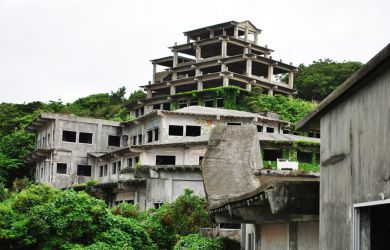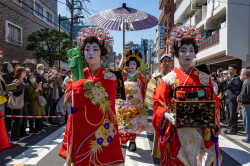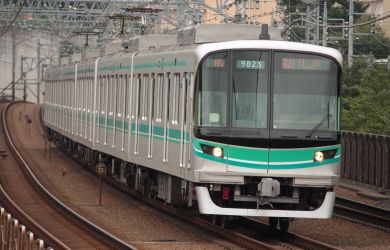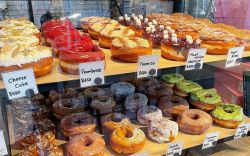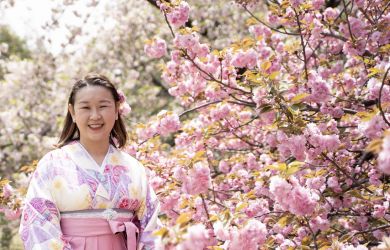
Originally published on metropolis.co.jp on June 2011

Courtesy of Koichi Torimura

Jane Kitagawa
When a restaurant is famous for its design, the food can often be an afterthought. At Yutoku Soba however, where handmade noodles are made fresh twice a day, no such excuses are necessary.
Opened in 2009, the restaurant sits off Meguro Street, 16 minutes’ walk from Meguro station, along a route strewn with stylish interior stores. At first glance, Yutoku Soba is a modern take on the traditional Japanese townhouse more commonly found in Kyoto. The building’s façade consists of Machiya-style wooden latticework in the renjigoshi (barred) style, but the depth of each louver ripples across the face to create a soft, undulating effect. The façade’s appearance changes dramatically depending on the weather, lighting and time of day but at all times a faint sense of the interior—in this case, the soba mill—permeates from within.
The billowing effect continues in the narrow dining room, where curved metal slats protruding from the ceiling again play with light and shade. Although minimal in feel, timber and warm lighting soften the atmosphere, and on a recent visit, cushions and flowers added a more human touch.
While Issho Architects have garnered attention for Yutoku Soba’s design, the master—thankfully—is also winning plaudits for his food. It’s hard to believe that this restaurant is his first, but conversation reveals he had an apprenticeship of 16 years. Clearly his experience is serving his Yutoku customers well.
Beer (Yebisu, ¥650/bottle; ¥720/nama) is imbibed while perusing the menu, and a complimentary dish of slightly bitter, pickled fukinoto—giant butterbur bulb-like shoots—starts the gastric preparations.
Bukkake (¥1,100) may be standard on many a soba restaurant menu, but variations in toppings allow chefs to display their individuality. Yutoku Soba’s version includes maitake tempura, deep-fried mochi, grated daikon and wakame among others. It looks enticing and is recommended for those with ravenous appetites.
Unfortunately it’s a bit late in the year for the seasonal spring soba salad (¥1,260) in which ingredients like young bamboo shoots, sakura ebi, quail’s eggs and nanoha come to the fore, and too early for summer’s
offering (also ¥1,260), where ingredients like pumpkin and myoga tempura, capsicum, cucumbers and eggplants act as a replacement.
In order to nonetheless take advantage of seasonal fare, Sansai tempura moriawase (¥620)—or in less exotic English, assorted mountain vegetable tempura—is chosen as a companion for three-color soba (¥1,350).
Three nests of delicate, slippery noodles arrive on a partitioned tray with a smoky tsuyu dipping broth of fish stock and soy. Thimbles of sliced leeks, grated daikon radish and wasabi—to add to the tsuyu—are the only accompaniments. Yutoku Soba’s regular noodle is pale tan and smooth and imparts a pure, clean taste. It’s a contrast to the paler poppy seed soba, flecked with spots and boasting a more toothsome, textural bite. The matcha (green tea) soba is bright and verdant and leaves a fuller, but still clean, taste in the mouth.
Mountainous by name and volume, the tempura consists of fiddleheard fern sprouts and butterbur among other brackish vegetables. Non-oily and better than average, it adds a richness to the meal and creates a thirst in need of quenching.
Yutoku Soba offers a small but considered selection of alcoholic beverages such as shochu, sake and umeshu; like the soba, the sake can be consumed both hot and cold. A recommended example of the latter is the fruity dewasakura (¥900 per go), listed as easy on the palate and apparently popular with women. While fruity, it’s also clear and bracing.
The dessert menu beckons but sadly, there is no room. The soba ice cream (¥420), soba dango (¥450), or the more unusual soba blancmange (¥640) will have to wait for a return visit.
